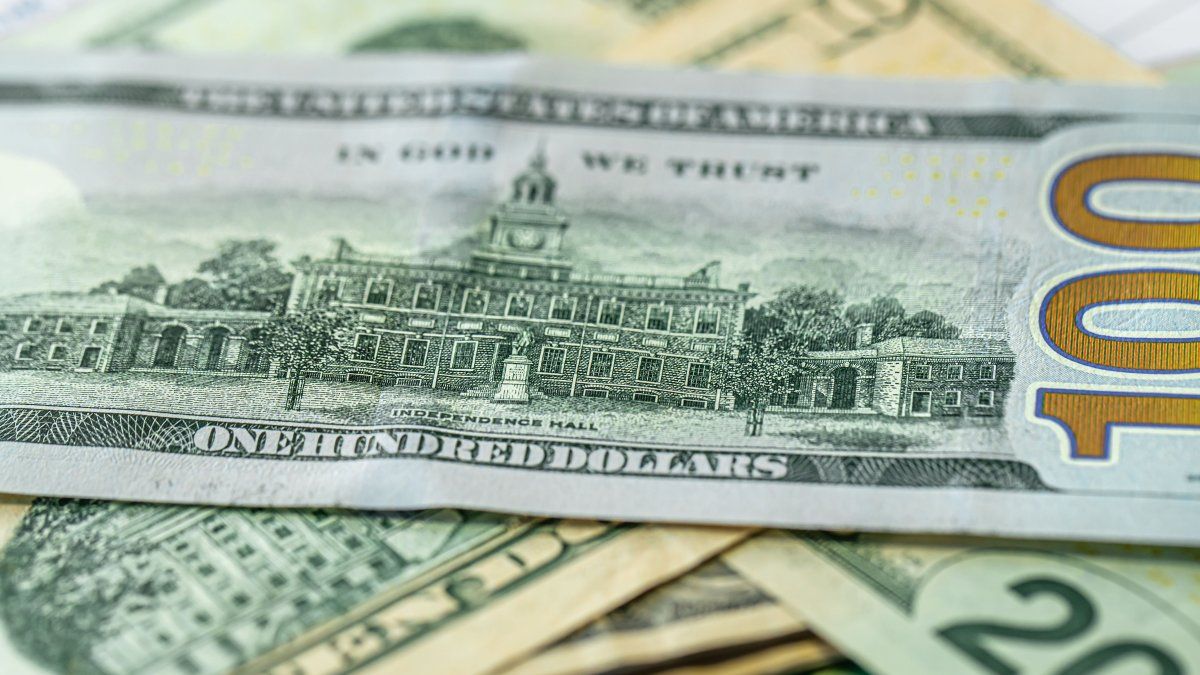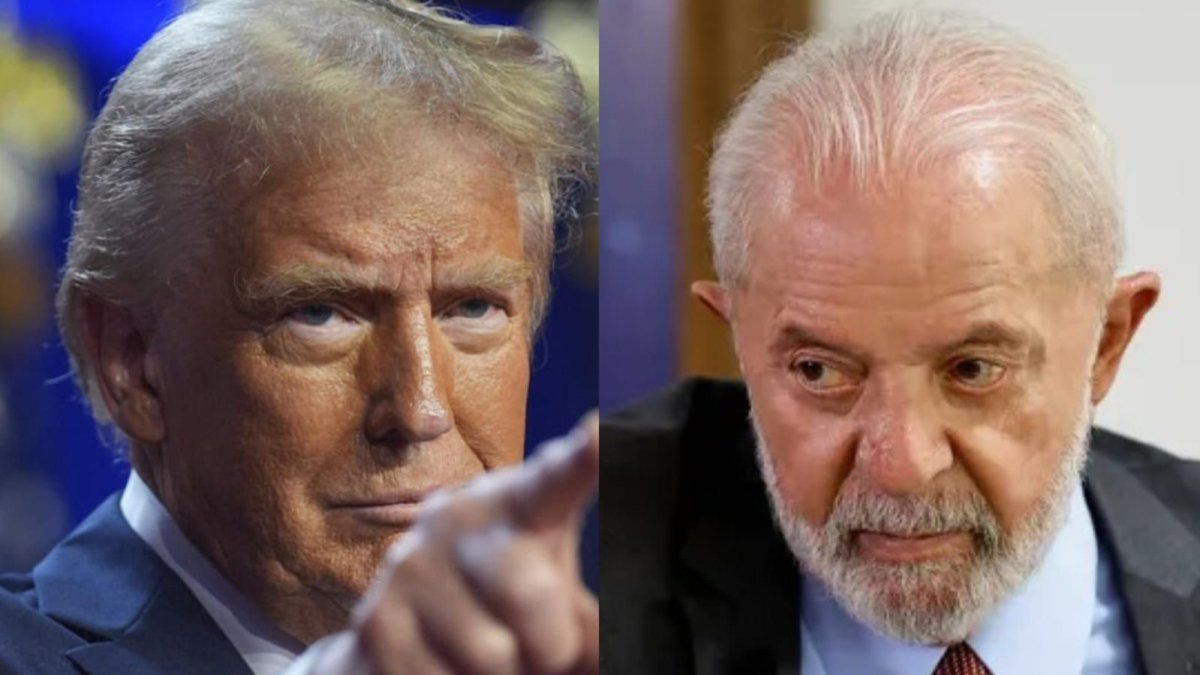More pronounced was the rise in dollar MEP, which rose $7.77 (+2.4%) to $335.39, what marked a spread with the official 90.5%.
But all eyes turned to the parallel market, where the blue dollar shot up another $10 for set a new record face value of $356, in a place that lacked offer, and could not meet again a firm demand, according to a survey of Ambit in caves of the City of Buenos Aires. So, the gap with the official exceeded 100% (up to 102.2%).
The strong rise of the parallel occurred before a sustained appetite for dollars, sought as a hedge, prior to the annual accounting closing, fueled by a notorious monetary expansion, in the face of a scenario of few sellers, operators commented.
“There is a dance of pesos in the market, of which many turn to the blue and that is why at times the sellers (of dollars) disappear. Due to seasonality, the devaluation is affirmed”commented a currency broker.
For Juan Pablo AlbornozInvecq analyst, “There are several factors that affect the skyrocketing of the blue. But the underlying reason is the amount of pesos in the economy: even at these prices, the informal and the financial ones continue to be below the equilibrium exchange rate against the private M3, that we estimate it in a range of $365-$370 in Invecq at the close of last week”.
blue dollar invecq.png
To take dimension of the current level of the blue, The parallel dollar exceeded on Monday, at constant prices (adjusted for inflation), the average of 2022 ($336), but is still below the average of 2021 ($382), according to Invecq. In addition, we are still a long way from the CPI-adjusted October 2020 record: $591.
Let us also remember that so far this year, the informal registers an increase of 71.2%, from $208 in December 2021, a variation well below inflation in the same period (around 95%). It is something opposite to what happens in the month, where the informal ticket climbs $42 or 13%, more than double the estimated CPI for December.
Now, Bathrobe held up Ambit what “In the short term, this skyrocketing of the blue possibly responds to the fact that the offer of dollar bills for receptive tourism ran since the card holders began to apply the MEP for consumption with foreign credit cards,” which partly explains the difference between the financiers and the parallel.
Secondly, the Invecq analyst explained that we must also add “a series of regulations in the financial market that complicate the arbitration between MEP and blue, which is in a clear context of low supply, and for this reason the run is accelerated.”
Among them, he mentions the one-day parking (immobilizing the titles in dollars denominated in pesos to be able to sell them later in hard currency) and especially Communication A 7340, which requires re-sending the dollars to the bank account and then forwarding them to the broker in case you want to operate them in any financial asset. This, without a doubt, makes the arbitration dynamics more complex.
For his part, the economist Gustavo Ber remarked to this medium that the current situation of the parallel “It is within the trend of readjustment of financial dollars, but the blue is specifically influenced by a greater demand for vacations abroad, since it is below the card dollar, and the usual dollarization due to an upcoming lower demand for money “.
And he also linked this process with “the advanced climate of elections and political tensions”, and does not ignore the fact that “a lower offer from receptive tourism from a greater use of cards with the MEP dollar.
In turn, the economist and director of the consulting firm Romano Group, alfredo romanoreinforced that the “Monetary issue continues to be very high and reached one trillion pesos in December alone. Through the three channels, either the purchase of Treasury securities by the BCRA, the issue of pesos to pay for Dolar Soja II and the issue via liquidation of Degs to close the year of financing. With the idea of reinforcing the (BCRA) reserves, soybean exporters have the benefit of liquidating their holdings at the special price of 230 pesos, against an official wholesale parity in the area of $176.05.
But the fight between the Government and that of the City of Buenos Aires over the judicial decision to refund funds also conditions the parallel exchange climate, they say in the square, since the Nation seeks to pay with amortizable bonds in 2030 when the opposition interprets that must be settled with direct cash.
“The seriousness that the rupture between the Nation and the City implies from the Court’s ruling is another factor of pressure on the blue”, said Romano. “The need for an agreement between the ruling party and the opposition is decisive to defuse the stress on the Treasury debt, but this dispute only aggravates and strongly limits the possibility of generating a financial bridge towards 2024. This will generate even greater financial pressure on the months to come and getting closer to the elections,” he added.
“The dispute over the co-participation funds continues as the City (of Buenos Aires) rejects the payment with ‘TX31’ bonds, thus continuing the legal bid within the sphere of the Supreme Court of Justice (CSJ)”, they said from Delphos Investment. They delimited that “The potential impact of the CSJ ruling is beginning to be seen, with the national government thinking of creating new taxes and the city of cutting them, which would in turn lead the BCRA to have a drop in interest rates.”
On the gap that exists between the blue and the financiers, Romano explained that “there is pressure from the BCRA intervening in the market at the last minute to mark the price and put a ceiling on the rise. However, we see that it will soon accompany the upward trend ” for all the factors listed above.
Central Bank bought US$144 million
While the blue skyrocketed, the Central Bank bought US$144 million in the exchange market on the day, favored by the incentive generated by the reimplementation of a special exchange rate for exports of the soybean chain, in force until Friday.
The positive balance – the second most important according to its magnitude so far this month – is added to the US$1,254 million that the monetary authority hoarded during the last four weeks.
Thus, the total amounts to almost US$1,398 million since the Export Increase Program (PIE) was reinstated, which establishes a differential exchange rate for the soybean complex of $230 per dollar.
At the wheel, the soybean dollar contributed US$222.660 million in the single free exchange market (MULC).
Since the entry into force of the measure on Monday, November 28, the Central Bank managed to hoard foreign currency in 19 of 20 exchange days. The only exception occurred on Tuesday of last week when the monetary authority sold US$31 million, in a day with limited activity due to the holiday decreed by the Government to celebrate winning the Soccer World Cup in Qatar.
Qatar dollar price, Tuesday, December 27
The new qatar dollar -which includes 30% of the COUNTRY tax, 45% deductible from Income Tax and Personal Property TaxY a new perception of 25% on account of Personal Assets- it rose 60 cents and ended at $366.24.
This exchange rate applies to Consumption abroad with debit and credit cards over US$300 per month.
Price of the tourist dollar or card dollar, Tuesday, December 27
The tourist dollar or card -retailer plus COUNTRY Tax, and a perception of 45% deductible from Income Tax and Personal Property Tax for consumption with cards abroad of up to US$300 per month- it appreciated 53 cents and traded at $320.46.
Savings dollar price, Tuesday, December 27
The dollar savings or solidarity dollar-which includes 30% of the tax COUNTRY and 35% deductible from Income Tax and Personal Assets- it climbed 50 cents and traded at $302.15.
Price of the wholesale dollar, Tuesday, December 27
The wholesale dollar, that directly regulates the BCRA, it advanced 32 cents to $176.05.
Price of the CCL dollar, Tuesday, December 27
The dollar Cash with Settlement (CCL) appreciates $3.65 and operates at $338.50. These values mark a gap with the official exchange rate 92.3% wholesaler.
MEP dollar price, Tuesday, December 27
At the same time, the MEP dollar $7.21 becomes more expensive and operates at $334.83, whereupon the spread with the official stands at 90.2%.
Price of the blue dollar, Tuesday, December 27
In the parallel market, the Dolar blue shot up $10 and ended at $356, according to a survey of Ambit in caves of the City of Buenos Aires. Consequently, the gap with the official exchange rate reached the 102.2%.
Price of the crypto dollar, Tuesday, December 27
The crypto dollar or bitcoin dollar loses 0.9% up to $335.82, based on the average among local exchanges reported by Coinmonitor.
Source: Ambito
I am a 24-year-old writer and journalist who has been working in the news industry for the past two years. I write primarily about market news, so if you’re looking for insights into what’s going on in the stock market or economic indicators, you’ve come to the right place. I also dabble in writing articles on lifestyle trends and pop culture news.




